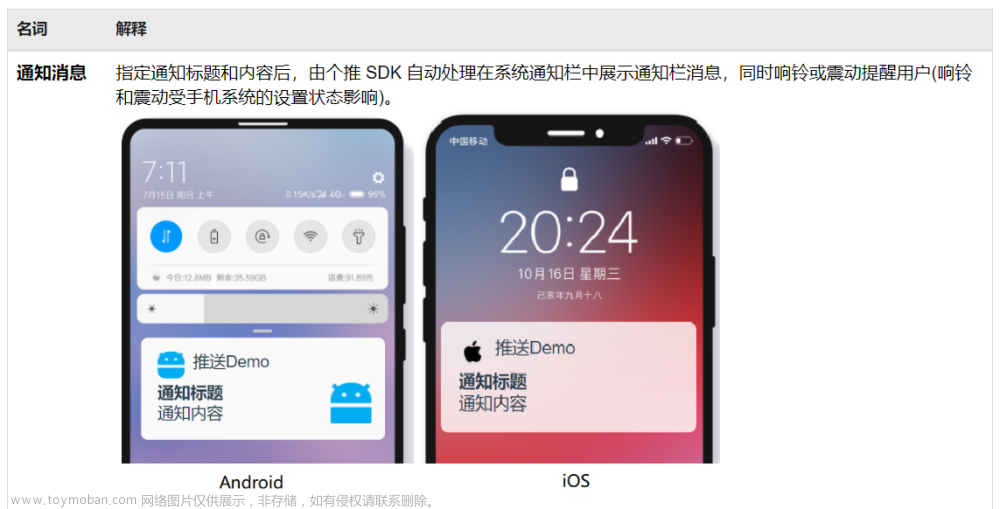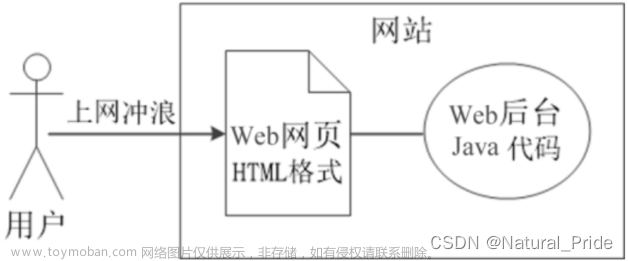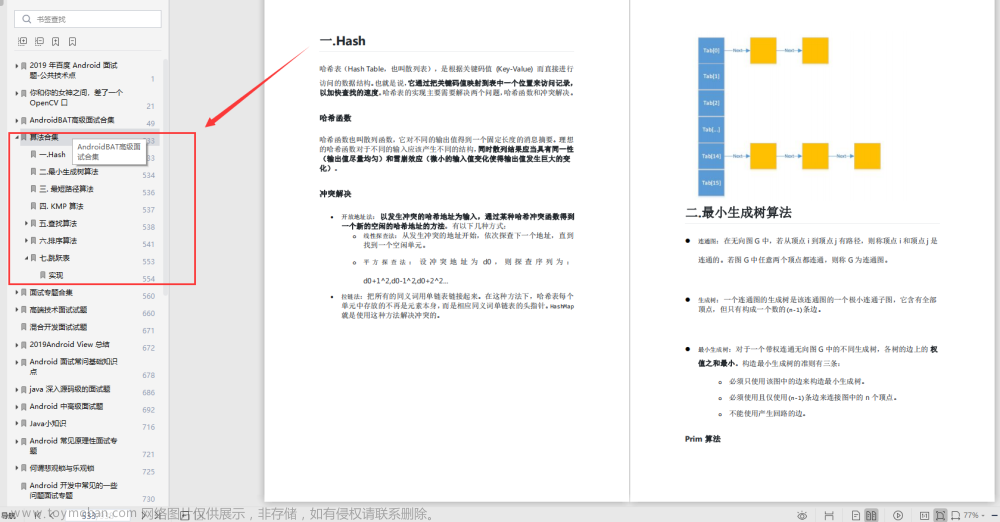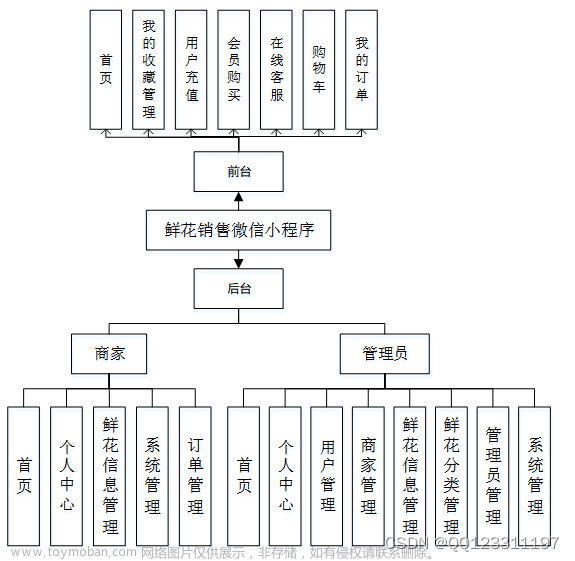目录
相对布局
显示一个美女
显示两个美女
安卓APP启动过程
安卓布局控件
常用布局之相对布局
常用布局之相对布局
padding和margin
按键美化
常用布局之线性布局
安卓按键响应的几种方式
直接设置按键的onClick绑定的函数
自定义类实现按键监听事件的接口
匿名内部类实现按键响应
mainActivity实现了oclick接口
页面跳转
如何跳转 Intent 配合onclick
如何传参 方式一 直接putExtra传参数
如何传参 方式二 通过Bundle搭配putExtras
安卓线程
Activity(页面)的生命周期 面试常考点
安卓网络编程
javaSocket服务端开发
JavaSocket 客户端开发:
安卓app中创建客户端连接java服务器
不能通过除UI外的线程去改变UI的控件 public TextView textview;
倒计时 Handler 、TextView、Message、 handler.sendMessage(msg);
socket客户端和按键显示输入输出流
网页创建 注意权限问题
智能家居页面
asserts: 存放一些资源,配置文件,图片
bin: 编译后会生成的一些文件,包括我们关心的apk
lib: 依赖库
res:
drawable:存放app程序要用到的一些图片
layout: 存放局文件的文件夹一般一个activity(安卓页面)对应一个布局
values: 存放一些参数,或者自定义控件的文件
AndroidMainfirst.xml: APP的配置权限:网络访问权限,名片夹访问权限,相机访问权限
目标机器SDK版本:APP的名字APP的图标 配置第一个被加载,启动页面
Laucher->mainifirst(执行数据初始化)->lauch(当app被按下)标签的activity被加载->oncreat被调用->java关联xml布局页面->显示->等待用户触摸等操作



相对布局
除了布局容器,您还可以使用布局属性来控制视图的布局行为,例如:
显示一个美女
控件的宽度
android:layout_width="match_parent"
控件的高度
android:layout_height="match_parent"

显示两个美女
相对布局 引入安卓的库和工具
<RelativeLayout xmlns:android="http://schemas.android.com/apk/res/android"
xmlns:tools="http://schemas.android.com/tools"
android:layout_width="match_parent" 布局宽度 自适应
android:layout_height="match_parent" 布局高度 自适应
tools:context=".MainActivity" > <布局头>
<RelativeLayout 布局
android:id="@+id/girl" 布局一个位置id
android:layout_width="wrap_content"布局宽
android:layout_height="300dp" 布局高300分辨率
android:background="@drawable/girl" 布局背景为grawable下的girl图片
/> /关闭布局
<RelativeLayout
android:layout_below = "@id/girl" 在这个布局位置的下面
android:layout_width = "wrap_content"
android:layout_height="300dp"
android:background= "@drawable/girl2"
/>
</RelativeLayout> <布局尾>
RelativeLayout中子控件常用属性:
1、相对于父控件,例如:android:layout_alignParentTop=“true”
android:layout_alignParentTop 控件的顶部与父控件的顶部对齐;
android:layout_alignParentBottom 控件的底部与父控件的底部对齐;
android:layout_alignParentLeft 控件的左部与父控件的左部对齐;
android:layout_alignParentRight 控件的右部与父控件的右部对齐;
//给定id位置的四周位置
android:layout_above 控件的底部置于给定ID的控件之上;
android:layout_below 控件的底部置于给定ID的控件之下;
android:layout_toLeftOf 控件的右边缘与给定ID的控件左边缘对齐;
android:layout_toRightOf 控件的左边缘与给定ID的控件右边缘对齐;
//给定id位置的内部上下左右
android:layout_alignBaseline 布局顶部上线对齐
android:layout_alignTop 控件的顶部边缘上线对齐
android:layout_alignBottom 控件的底部边缘下线对齐
android:layout_alignLeft 控件的左边缘与给定ID的左边缘对齐;
android:layout_alignRight 控件的右边缘与给定ID的右边缘对齐;
3、居中,例如:android:layout_centerInParent=“true”
android:layout_centerHorizontal 水平居中;
android:layout_centerVertical 垂直居中;
android:layout_centerInParent 父控件的中央;

RelativeLayout中子控件常用属性:
1、相对于父控件,例如:android:layout_alignParentTop=“true”
android:layout_alignParentTop 控件的顶部与父控件的顶部对齐;
android:layout_alignParentBottom 控件的底部与父控件的底部对齐;
android:layout_alignParentLeft 控件的左部与父控件的左部对齐;
android:layout_alignParentRight 控件的右部与父控件的右部对齐;
//给定id位置的四周位置
android:layout_above 控件的底部置于给定ID的控件之上;
android:layout_below 控件的底部置于给定ID的控件之下;
android:layout_toLeftOf 控件的右边缘与给定ID的控件左边缘对齐;
android:layout_toRightOf 控件的左边缘与给定ID的控件右边缘对齐;
//给定id位置的内部上下左右
android:layout_alignBaseline 布局顶部上线对齐
android:layout_alignTop 控件的顶部边缘上线对齐
android:layout_alignBottom 控件的底部边缘下线对齐
android:layout_alignLeft 控件的左边缘与给定ID的左边缘对齐;
android:layout_alignRight 控件的右边缘与给定ID的右边缘对齐;
3、居中,例如:android:layout_centerInParent=“true”
android:layout_centerHorizontal 水平居中;
android:layout_centerVertical 垂直居中;
android:layout_centerInParent 父控件的中央;
<RelativeLayout xmlns:android="http://schemas.android.com/apk/res/android"
xmlns:tools="http://schemas.android.com/tools"
android:layout_width="match_parent"
android:layout_height="match_parent"
tools:context=".MainActivity" >
<!-- 在中间创建一个页面 -->
<RelativeLayout
android:layout_width="300dp"
android:layout_height="120dp"
android:background="#00ff00"
android:layout_centerInParent="true"
>
<!-- 在这个页面中创建字符串 id位置 宽 高 大小 颜色 内容 -->
<TextView
android:id="@+id/usr1"
android:layout_width="wrap_content"
android:layout_height="wrap_content"
android:textSize="30dp"
android:textColor="#ffffff"
android:text="用户:"
/>
<!-- 在这个页面中创建一个文本框 id位置 宽 高 在usr1的右边 -->
<EditText
android:id="@+id/kuang1"
android:layout_width="250dp"
android:layout_height="40dp"
android:layout_toRightOf="@id/usr1"
/>
<!-- 在这个页面中创建字符串 id位置 宽 高 大小 颜色 内容 -->
<TextView
android:id="@+id/passwd"
android:layout_width="wrap_content"
android:layout_height="wrap_content"
android:textSize="30dp"
android:textColor="#ffffff"
android:text="密码:"
android:layout_below="@id/usr1"
/>
<!-- 在这个页面中创建一个文本框 id位置 宽 高 在usr2的右边 在kuang1的下面 -->
<EditText
android:id="@+id/kuang2"
android:layout_width="250dp"
android:layout_height="40dp"
android:layout_toRightOf="@id/passwd"
android:layout_below="@id/kuang1"
/>
<!-- 在这个页面中创建按键 id位置 宽 高 大小 在kuang2下面 父控件右边 内容 -->
<Button
android:id="@+id/anjian1"
android:layout_width="wrap_content"
android:layout_height="wrap_content"
android:layout_below="@id/kuang2"
android:layout_alignParentRight="true"
android:text="取消"
/>
<!-- 在这个页面中创建字符串 id位置 宽 高 大小 在kuang2下面 按键1左边 passwd右边内容 -->
<Button
android:id="@+id/anjian1"
android:layout_width="wrap_content"
android:layout_height="wrap_content"
android:layout_below="@id/kuang2"
android:layout_toLeftOf="@id/anjian1"
android:layout_toRightOf="@id/passwd"
android:text="确认"
/>
</RelativeLayout>
</RelativeLayout>

外边距可以设置为正值、负值或百分比。
外边距可以用来控制元素之间的间距、对齐元素、扩展元素的可点击区域等。
外边距不会影响元素的背景颜色或边框。
android:layout_margin:本组件离上下左右各组件的外边距。
android:layout_marginStart:本组件离开始的位置的外边距。
android:layout_marginEnd:本组件离结束位置的外边距。
android:layout_marginBottom:本组件离下部组件的外边距。
android:layout_marginTop:本组件离上部组件的外边距。
android:layout_marginLeft:本组件离左部组件的外边距。
android:layout_marginRight:本组件离右部组件的外边距
-
安卓APP启动过程
-
安卓布局控件
-
android:layout_width和android:layout_height:设置视图的宽度和高度。 -
android:layout_margin:设置视图的外边距。 -
android:layout_padding:设置视图的内边距。 -
android:layout_gravity:设置视图在布局容器中的对齐方式。 -
android:layout_weight:定义视图在线性布局中的权重,用于实现灵活的伸缩布局。 - android:background="#ff0000" 设置背景颜色 #代表十六进制 ff红色 00 00 红绿蓝三基色
-
常用布局之相对布局
- 相对给定Id控件,例如:android:layout_above=“@id/**”
-
常用布局之相对布局
- 相对给定Id控件,例如:android:layout_above=“@id/**”
-
padding和margin
-
内边距(padding):内边距定义了元素的内容与其边框之间的空白区域。
内边距可以设置为正值、负值或百分比。
内边距可以用来控制元素内容与边框之间的间距、增加元素的可点击区域等。
内边距会影响元素的背景颜色。android:padding:为组件的四边设置相同的内边距。
android:paddingLeft:为组件的左边设置内边距。
android:paddingRight:为组件的右边设置内边距。
android:paddingTop:为组件的上边设置内边距。
android:paddingBottom:为组件的下边设置内边距。
-


按键美化
参考博文
- https://blog.csdn.net/tracydragonlxy/article/details/88552262

代码块
<RelativeLayout xmlns:android="http://schemas.android.com/apk/res/android"
xmlns:tools="http://schemas.android.com/tools"
android:layout_width="match_parent"
android:layout_height="match_parent"
android:background="@drawable/bg_shopping_menu"
tools:context=".MainActivity" >
<RelativeLayout
android:id="@+id/relativeLayout1"
android:layout_width="wrap_content"
android:layout_height="50dp"
android:background="#ff99cc" >
<TextView
android:id="@+id/smartHome"
android:layout_width="wrap_content"
android:layout_height="wrap_content"
android:layout_marginLeft="15dp"
android:layout_marginTop="8dp"
android:textSize="18dp"
android:text="prppr -- 智能家居页面" />
<Button
android:id="@+id/bnt2ZhuCe"
android:layout_width="wrap_content"
android:layout_height="wrap_content"
android:layout_alignParentRight="true"
android:layout_alignParentTop="true"
android:text="注册" />
<Button
android:layout_width="wrap_content"
android:layout_height="wrap_content"
android:layout_toLeftOf="@id/bnt2ZhuCe"
android:layout_alignParentTop="true"
android:layout_marginRight="10dp"
android:text="查询信息" />
</RelativeLayout>
<RelativeLayout
android:id="@+id/minAction"
android:layout_width="90dp"
android:layout_height="70dp"
android:layout_centerHorizontal="true"
android:layout_centerVertical="true"
android:background="@drawable/pic_rf" />
<RelativeLayout
android:id="@+id/car"
android:layout_width="60dp"
android:layout_height="40dp"
android:layout_alignLeft="@+id/minAction"
android:layout_centerVertical="true"
android:layout_marginLeft="60dp"
android:background="@drawable/card" />
<Button
android:id="@+id/bnt1Shuaka"
android:layout_width="wrap_content"
android:layout_height="wrap_content"
android:layout_alignBottom="@id/minAction"
android:layout_alignParentBottom="true"
android:layout_centerHorizontal="true"
android:layout_marginBottom="15dp"
android:background="@drawable/btn_selector"
android:text="刷卡" />
</RelativeLayout>-
常用布局之线性布局

常用且易错 api
android:layout_weight="1" 权重1分配占比 看是水平还是垂直布局相对应width和height为0dp
android:layout_width="match_parent" 用于指定一个 View 或布局应该与其父容器的大小匹配。 android:layout_width="wrap_content " 是使视图的宽度或高度根据内容的实际尺寸来动态调整
android:gravity="center" 是用于控制视图内部内容的对齐方式。它可以应用于诸如 TextView、Button 等具有文本内容的视图,以确定文本在视图内部的对齐方式。例如,使用 android:gravity="center" 可以使文本在视图中水平和垂直方向上都居中显示。
android:layout_gravity="" 用于控制视图在其父布局中的对齐方式。它可以影响视图在父布局中水平和垂直方向上的位置。
<RelativeLayout xmlns:android="http://schemas.android.com/apk/res/android"
xmlns:tools="http://schemas.android.com/tools"
android:layout_width="match_parent"
android:layout_height="match_parent"
android:background="@drawable/bg_shopping_menu"
tools:context=".MainActivity" >
<!-- 在中间创建线性布局 水平布局 -->
<LinearLayout
android:layout_width="280dp"
android:layout_height="100dp"
android:layout_centerInParent="true"
android:orientation="horizontal"
>
<!-- 线性布局 占比例1 垂直方向布局 weight是权重 垂直方向heigh为0dp权重分配 -->
<LinearLayout
android:layout_weight="1"
android:layout_width="0dp"
android:layout_height="100dp"
android:orientation="vertical"
>
<!-- 在这个垂直方向上分配三个字符串 match_parent匹配父组件发小wrap_content会自动分配 -->
<TextView
android:layout_weight="1"
android:layout_width="match_parent"
android:layout_height="0dp"
android:text="用户"
android:gravity="center"
/>
<!-- gravity组件子元素对齐方式 center中心对齐 -->
<TextView
android:layout_weight="1"
android:layout_width="match_parent"
android:layout_height="0dp"
android:text="登录"
android:gravity="center"
/>
<TextView
android:layout_weight="1"
android:layout_width="match_parent"
android:layout_height="0dp"
android:text="ID"
android:gravity="center"
/>
</LinearLayout>
<!-- 注意相对布局和线性布局要注意关闭 -->
<LinearLayout
android:layout_weight="5"
android:layout_width="0dp"
android:layout_height="100dp"
android:orientation="vertical"
>
<EditText
android:layout_weight="1"
android:layout_width="match_parent"
android:layout_height="0dp"
/>
<EditText
android:layout_weight="1"
android:layout_width="match_parent"
android:layout_height="0dp"
/>
<EditText
android:layout_weight="1"
android:layout_width="match_parent"
android:layout_height="0dp"
/>
</LinearLayout>
</LinearLayout>
</RelativeLayout>

使用
-
安卓按键响应的几种方式
-
setOnClickListener():是 View 类的一个方法,用于为 View 设置一个 OnClickListener。通过调用这个方法,可以将一个实现了 OnClickListener 接口的对象设置给需要监听点击事件的 View。当用户点击该 View 时,系统会调用 OnClickListener 中的onClick(View v)方法。 -
OnClickListener:是一个接口,用于监听用户点击事件。它包含一个抽象方法
onClick(View v),需要在这个方法中编写点击事件的逻辑。通过实现 OnClickListener 接口,可以自定义点击事件的响应。 -
onClick(View v):是 View.OnClickListener 接口中的抽象方法,用于处理用户点击事件。当用户点击一个 View 时,系统会调用该方法,并将被点击的 View 作为参数传入。开发者需要实现这个方法,以执行自定义的点击事件逻辑 -
直接设置按键的onClick绑定的函数
//activity
<RelativeLayout xmlns:android="http://schemas.android.com/apk/res/android"
xmlns:tools="http://schemas.android.com/tools"
android:layout_width="match_parent"
android:layout_height="match_parent"
tools:context=".MainActivity" >
<!-- 以响应用户点击事件 电机button则调用main函数中"buttonBeOnclick" -->
<Button
android:id="@+id/button1"
android:layout_width="wrap_content"
android:layout_height="wrap_content"
android:onClick="buttonBeOnclick"
android:text="按键1" />
<Button
android:id="@+id/button2"
android:layout_width="wrap_content"
android:layout_height="wrap_content"
android:layout_alignParentLeft="true"
android:layout_below="@+id/button1"
android:layout_marginTop="93dp"
// 以响应用户点击事件 电机button则调用main函数中"buttonBeOnclick"
android:onClick="buttonBeOnclick"
android:text="按键2" />
</RelativeLayout>
//Mainactivity
package com.example.prppr.leren;
import android.os.Bundle;
import android.app.Activity;
import android.view.Menu;
import android.view.View;
import android.widget.Toast;
public class MainActivity extends Activity {
@Override
protected void onCreate(Bundle savedInstanceState) {
super.onCreate(savedInstanceState);
setContentView(R.layout.activity_main);
}
// View 类似于通配符 名字叫v v.getId获取传过来v的id
public void buttonBeOnclick(View v) {
switch (v.getId()) {
// 创建一个短暂的 Toast 弹窗,并显示文本 “按键一被按下
// v的id是 R中的idR.id.button1 用于引用应用程序中的资源。
// toast静态方法 this当前对象即 MainActivity 第二个参数是要显示内容,
// 第三个参数是持续时间,0 表示 Toast.LENGTH_SHORT,即短暂的显示。
//show() 方法是 Toast 类的方法,用于显示 Toast 弹窗
case R.id.button1:
Toast.makeText(this, "按键一被按下", 0).show();
break;
case R.id.button2:
Toast.makeText(this, "按键二被按下", 0).show();
break;
}
}
}

-
自定义类实现按键监听事件的接口
package com.example.prppr;
import android.app.Activity;
import android.os.Bundle;
import android.view.View;
import android.widget.Button;
// 自定义的点击事件处理类,实现了View.OnClickListener接口 继承
class myOnclieckHandler implements View.OnClickListener{
@Override//方法重写触控事件 有触控这日志输出 没用toast因为toast得调用主函数中
public void onClick(View v) {
// TODO Auto-generated method stub
switch (v.getId()){
case R.id.button1:
//Toast.makeText(this, "按键一被按下", 0).show(); //没用toast因为toast得调用主函数中
System.out.println("按键一被按下");
break;
case R.id.button2:
//Toast.makeText(this, "按键二被按下", 0).show();
System.out.println("按键二被按下");
break;
}
}
}
public class MainActivity extends Activity {
//声明两个按键名
Button bnt1;
Button bnt2;
@Override
protected void onCreate(Bundle savedInstanceState) {
super.onCreate(savedInstanceState);
setContentView(R.layout.activity_main);
// 通过ID在布局中找到按钮1和按钮2
bnt1 = (Button) findViewById(R.id.button1);
bnt2 = (Button) findViewById(R.id.button2);
// new myClickHandler() 来创建了一个 myClickHandler 的实例,并将其作为参数传递给 setOnClickListener
//setOnClickListener 是 Button 类的一个方法,用于设置按钮的点击事件监听器。
//它接受一个实现了 View.OnClickListener 接口的对象作为参数,以便在按钮被点击时调用相应的事件处理方法。
bnt1.setOnClickListener(new myOnclieckHandler());
bnt2.setOnClickListener(new myOnclieckHandler());
}
}
-
匿名内部类实现按键响应
//mainjava
package com.example.prppr.leren;
import android.app.Activity;
import android.os.Bundle;
import android.view.View;
import android.widget.Button;
import android.widget.Toast;
public class MainActivity extends Activity {
Button bnt1;
Button bnt2;
@Override
protected void onCreate(Bundle savedInstanceState) {
super.onCreate(savedInstanceState);
setContentView(R.layout.activity_main);
bnt1 = (Button) findViewById(R.id.button1);
bnt2 = (Button) findViewById(R.id.button2);
//调用bnt1得方法 里面有个匿名内部类
bnt1.setOnClickListener(new View.OnClickListener(){//匿名内部类
@Override//匿名内部类中重写方法
public void onClick(View v) {
// TODO Auto-generated method stub
Toast.makeText(MainActivity.this, "按键一被按下", 0).show();
}
});
bnt2.setOnClickListener(new View.OnClickListener() {
@Override
public void onClick(View v) {
// TODO Auto-generated method stub
Toast.makeText(MainActivity.this, "按键二被按下", 0).show();
}
});
}
}
//xml
<RelativeLayout xmlns:android="http://schemas.android.com/apk/res/android"
xmlns:tools="http://schemas.android.com/tools"
android:layout_width="match_parent"
android:layout_height="match_parent"
android:paddingBottom="@dimen/activity_vertical_margin"
android:paddingLeft="@dimen/activity_horizontal_margin"
android:paddingRight="@dimen/activity_horizontal_margin"
android:paddingTop="@dimen/activity_vertical_margin"
tools:context=".MainActivity" >
<Button
android:id="@+id/button1"
android:layout_width="wrap_content"
android:layout_height="wrap_content"
android:text="按键一"
/>
<Button
android:id="@+id/button2"
android:layout_width="wrap_content"
android:layout_height="wrap_content"
android:layout_alignLeft="@+id/button1"
android:layout_below="@+id/button1"
android:layout_marginTop="71dp"
android:text="按键二" />
</RelativeLayout>
-
mainActivity实现了oclick接口
package com.example.prppr.leren;
import android.app.Activity;
import android.os.Bundle;
import android.view.View;
import android.widget.Button;
import android.widget.Toast;
//继承这个接口的方法
public class MainActivity extends Activity implements View.OnClickListener {
Button bnt1;
Button bnt2;
@Override
// 重写 调用方法
protected void onCreate(Bundle savedInstanceState) {
// 调用父类得初始化
super.onCreate(savedInstanceState);
setContentView(R.layout.activity_main);
// 把组件按键初始化显示
bnt1 = (Button) findViewById(R.id.button1);
bnt2 = (Button) findViewById(R.id.button2);
// 实现了 OnClickListener 接口的对象设置给需要监听点击事件的 View。
// 当用户点击该 View 时,系统会调用 OnClickListener 中的 onClick(View v) 方法。
bnt1.setOnClickListener(this);//this是MainActivity
bnt2.setOnClickListener(this);
}
@Override
public void onClick(View v) {
// TODO Auto-generated method stub
switch (v.getId()) {
case R.id.button1:
Toast.makeText(this, "按键一被按下", 0).show(); // 没用toast因为toast得调用主函数中
System.out.println("按键一被按下");
break;
case R.id.button2:
Toast.makeText(this, "按键二被按下", 0).show();
System.out.println("按键二被按下");
break;
}
}
}
页面跳转
如何创建 右键new other 、Android activity 。。。。创建多个页面
如何跳转 Intent 配合onclick
//mainactivity
package com.example.prppr;
import android.app.Activity;
import android.content.Intent;
import android.os.Bundle;
import android.view.View;
public class MainActivity extends Activity {
@Override
protected void onCreate(Bundle savedInstanceState) {
super.onCreate(savedInstanceState);
setContentView(R.layout.activity_main);
}
public void nextPage(View v){//onclick 函数按下按键时执行此函数
// 创建一个对象 指定要从那跳转到哪里
Intent intent = new Intent(this,TwoActivity.class);
startActivity(intent);
}
}
//layout
<RelativeLayout xmlns:android="http://schemas.android.com/apk/res/android"
xmlns:tools="http://schemas.android.com/tools"
android:layout_width="match_parent"
android:layout_height="match_parent"
tools:context=".MainActivity" >
<TextView
android:id="@+id/textView1"
android:layout_width="wrap_content"
android:layout_height="wrap_content"
android:text="这是界面一" />
<Button
android:layout_width="wrap_content"
android:layout_height="wrap_content"
android:layout_alignParentRight="true"
android:layout_alignTop="@+id/textView1"
android:layout_marginRight="16dp"
android:onClick="nextPage"
android:text="点击进入界面二" />
</RelativeLayout>如何传参 方式一 直接putExtra传参数
//传参数可以说字符串 数组 小数 ------发送方
package com.example.prppr;
import android.app.Activity;
import android.content.Intent;
import android.os.Bundle;
import android.view.View;
public class MainActivity extends Activity {
@Override
protected void onCreate(Bundle savedInstanceState) {
super.onCreate(savedInstanceState);
setContentView(R.layout.activity_main);
}
public void nextPage(View v){
Intent intent = new Intent(this,TwoActivity.class);
intent.putExtra("key_data", "杨浪很帅");//键值对 传参数
startActivity(intent);
}
}
//页面二收 打印
package com.example.prppr;
import android.app.Activity;
import android.content.Intent;
import android.os.Bundle;
import android.view.View;
import android.widget.Toast;
public class TwoActivity extends Activity {
public String data1;
@Override
protected void onCreate(Bundle savedInstanceState) {
super.onCreate(savedInstanceState);
setContentView(R.layout.activity_two);
Intent itwo = getIntent();//获取 Intent 对象 实例化
data1 = itwo.getStringExtra("key_data");//根据键值对 赋值内容 注意类型
Toast.makeText(this, "收到数据:"+data1, 0).show();//显示并打印出来
}
public void nextPage(View v){
Intent intent = new Intent(this,ThreeActivity.class);
intent.putExtra("key_data","good lucky!!");//传给页面三
startActivity(intent);
}
}
如何传参 方式二 通过Bundle搭配putExtras
//页面二传到页面三
package com.example.prppr;
import android.app.Activity;
import android.content.Intent;
import android.os.Binder;
import android.os.Bundle;
import android.view.View;
import android.widget.Toast;
public class TwoActivity extends Activity {
public String data1;
@Override
protected void onCreate(Bundle savedInstanceState) {
super.onCreate(savedInstanceState);
setContentView(R.layout.activity_two);
//页面1到二时 获取Intent 根据键值对 输出内容显示在屏幕上
Intent itwo = getIntent();//获取 Intent 对象 实例化
data1 = itwo.getStringExtra("key_data");//根据键值对 赋值内容 注意类型
Toast.makeText(this, "收到数据:"+data1, 0).show();//显示并打印出来
}
public void nextPage(View v){
//在页面二按下按键时 配置好bundle内容 和跳转页面 传过去在页面三中接收显示
Intent intent = new Intent(this,ThreeActivity.class);//实例化
Bundle bunble = new Bundle();
bunble.putString("MyData", "杨浪咯咯咯咯咯");//填充内容
bunble.putInt("ID", 100);
intent.putExtras(bunble);//放进去
startActivity(intent);//开始
}
}
//页面三接收
package com.example.prppr;
import java.io.ObjectOutputStream.PutField;
import android.app.Activity;
import android.content.Intent;
import android.os.Bundle;
import android.widget.Toast;
public class ThreeActivity extends Activity {
@Override
protected void onCreate(Bundle savedInstanceState) {
super.onCreate(savedInstanceState);
setContentView(R.layout.activity_three);
Intent intent = this.getIntent ();
Bundle bundle = intent.getExtras();
String datas = bundle.getString("MyData");
int datai = bundle.getInt("ID");
Toast.makeText(this, "获取到:"+datas +datai, 0).show();
}
}
-
安卓线程
实现页面的诺干秒后的自动跳转效果
run方法(函数)是线程要做的”事情”,相当linuxC线程的回调函数
启动线程
//界面一线程延时三秒后自动跳转
//必须新建线程 否则会跟ui界面的线程冲突 并且使用try和catch
package com.example.prppr;
import android.app.Activity;
import android.content.Intent;
import android.os.Bundle;
public class MainActivity extends Activity {
@Override
protected void onCreate(Bundle savedInstanceState) {
super.onCreate(savedInstanceState);
setContentView(R.layout.activity_main);
Thread t = new Thread(new Runnable() { //实例化线程和线程中的匿名类对象 并重写执行run方法
@Override
public void run() { //重写并执行方法
// TODO Auto-generated method stub
try {
Thread.sleep(3000);//可能异常所以try catch
Intent intent = new Intent(MainActivity.this,TwoActivity.class);
intent.putExtra("key_data","浪滚滚");
startActivity(intent);
} catch (InterruptedException e) {
// TODO Auto-generated catch block
e.printStackTrace();
}
}
});
t.start();
}
// public void nextPage(View v){
// Intent intent = new Intent(this,TwoActivity.class);
// intent.putExtra("key_data", "杨浪很帅");//键值对 传参数
// startActivity(intent);
// }
}
-
Activity(页面)的生命周期 面试常考点

package com.example.prppr;
import android.app.Activity;
import android.content.Intent;
import android.os.Bundle;
import android.widget.Toast;
public class MainActivity extends Activity {
@Override
protected void onCreate(Bundle savedInstanceState) {
super.onCreate(savedInstanceState);
setContentView(R.layout.activity_main);
System.out.println("onCreat!!");
Thread t = new Thread(new Runnable() { //实例化线程和线程中的匿名类对象 并重写执行run方法
@Override
public void run() { //重写并执行方法
// TODO Auto-generated method stub
try {
Thread.sleep(3000);//可能异常所以try catch
Intent intent = new Intent(MainActivity.this,TwoActivity.class);
intent.putExtra("key_data","浪滚滚");
startActivity(intent);
} catch (InterruptedException e) {
// TODO Auto-generated catch block
e.printStackTrace();
}
}
});
t.start();
}
@Override
protected void onStart() {//开始时打印日志
// TODO Auto-generated method stub
System.out.println("onStart");
Toast.makeText(this, "onStart", 0).show();//显示并打印出来
super.onStart();
}
@Override
protected void onResume() {//运行时打印日志
// TODO Auto-generated method stub
System.out.println("onResume");
Toast.makeText(this, "onResume", 0).show();//显示并打印出来
super.onResume();
}
@Override
protected void onPause() {//锁住时打印
// TODO Auto-generated method stub
System.out.println("onPause");
Toast.makeText(this, "onPause", 0).show();//显示并打印出来
super.onPause();
}
@Override
protected void onStop() {
// TODO Auto-generated method stub
System.out.println("onStop");
Toast.makeText(this, "onStop", 0).show();//显示并打印出来
super.onStop();
}
}
-
安卓网络编程
javaSocket服务端开发
//单个单次socket连接
import java.io.IOException;
import java.io.InputStream;
import java.io.ObjectInputStream.GetField;
import java.io.StringReader;
import java.net.ServerSocket;
import java.net.Socket;
import java.nio.ByteBuffer;
public class Server {
public static void main(String[] args) {
byte[] data = new byte[128];
int len;
try {
//创建socket套接字和端口号
ServerSocket server = new ServerSocket(8888);
System.out.println("socket创建成功");
//根据socket创建连接套接字
Socket c_fd = server.accept();
System.out.println("accept连接成功");
//根据连接获取数据流 并创建数据套接字
InputStream msg = c_fd.getInputStream();
//根据数据流读取内容大豆data数组中 len长度
len = msg.read(data);
//打印数据 //字节数组 data 转换为字符串的方式之一。String格式 哪里开始 长度
System.out.println("获取到内容:" + new String(data, 0, len));
} catch (IOException e) {
e.printStackTrace();
}
}
}
多连接
import java.io.IOException;
import java.io.InputStream;
import java.net.ServerSocket;
import java.net.Socket;
public class Server {
public static void main(String[] args) {
try {
// 1 创建socket套接字和端口号
ServerSocket server = new ServerSocket(8888);
System.out.println("socket创建成功");
while(true){ // 2 不断阻塞连接
//根据socket创建连接套接字
final Socket c_fd = server.accept();
System.out.println("accept连接成功");
new Thread(new Runnable() { // 3 连接上一个就新建一个线程对接读取数据
// 实例化线程 钩爪方法 中重写方法并执行 防止异常错误try
public void run() {
try {
byte[] data = new byte[128];
int len;
//根据连接获取数据流 并创建数据套接字
InputStream msg;
msg = c_fd.getInputStream();
//根据数据流读取内容大豆data数组中 len长度
len = msg.read(data);
//打印数据 //字节数组 data 转换为字符串的方式之一。String格式 哪里开始 长度
System.out.println("获取到内容:" + new String(data, 0, len));
} catch (IOException e) {
// TODO Auto-generated catch block
e.printStackTrace();
}
}
}).start();
}
} catch (IOException e) {
e.printStackTrace();
}
}
}
JavaSocket 客户端开发:
import java.io.IOException;
import java.io.OutputStream;
import java.net.Socket;
import java.net.UnknownHostException;
import java.util.Scanner;
public class Client {
public static void main(String[] args) {
try {
//实例化客户端连接
Socket client = new Socket("172.16.107.146",8889);
//连接上 捕获输出流 返回套接字c_fd
OutputStream c_fd = client.getOutputStream();
//捕获按键输入 存放到msg中
Scanner sc = new Scanner(System.in);
String msg = sc.next();
//通过输出流方法 以beyes类型发送
c_fd.write(msg.getBytes());
}catch (IOException e) {
// TODO Auto-generated catch block
e.printStackTrace();
}
}
}
//客户端实现收和发
import java.io.IOException;
import java.io.InputStream;
import java.io.OutputStream;
import java.net.Socket;
import java.util.Scanner;
public class Client {
public static void main(String[] args) {
try {
//实例化客户端连接
Socket client = new Socket("172.16.106.130",8883);
//连接上 捕获输出流 返回套接字c_fd
OutputStream out = client.getOutputStream();
//捕获按键输入 存放到msg中
Scanner sc = new Scanner(System.in);
String msg = sc.next();
//通过输出流方法 以beyes类型发送
out.write(msg.getBytes());
int len;
byte[] datas = new byte[128];
//客户端捕获输入流
InputStream in = client.getInputStream();
//读取输入流存放到datas里
len = in.read(datas);
System.out.println("客户端获取到数据:"+new String(datas,0,len));
}catch (IOException e) {
// TODO Auto-generated catch block
e.printStackTrace();
}
}
}
安卓app中创建客户端连接java服务器
模拟器----安卓ip和 服务器端必须是在同一个网段 可通过驱动桥接模式
//java服务器端 while不断等待连接 创建线程对接处理数据
import java.io.IOException;
import java.io.InputStream;
import java.net.ServerSocket;
import java.net.Socket;
public class Server {
public static void main(String[] args) {
try {
// 1 创建socket套接字和端口号
ServerSocket server = new ServerSocket(8999);
System.out.println("socket创建成功");
while(true){ // 2 不断阻塞连接
//根据socket创建连接套接字
final Socket c_fd = server.accept();
System.out.println("accept连接成功");
new Thread(new Runnable() { // 3 连接上一个就新建一个线程对接读取数据
// 实例化线程 钩爪方法 中重写方法并执行 防止异常错误try
public void run() {
try {
byte[] data = new byte[128];
int len;
//根据连接获取数据流 并创建数据套接字
InputStream msg;
msg = c_fd.getInputStream();
//根据数据流读取内容大豆data数组中 len长度
len = msg.read(data);
//打印数据 //字节数组 data 转换为字符串的方式之一。String格式 哪里开始 长度
System.out.println("获取到内容:" + new String(data, 0, len));
} catch (IOException e) {
// TODO Auto-generated catch block
e.printStackTrace();
}
}
}).start();
}
} catch (IOException e) {
e.printStackTrace();
}
}
}
//安卓app客户端
package com.example.socket_androidapp;
import java.io.IOException;
import java.io.OutputStream;
import java.net.Socket;
import java.util.Scanner;
import android.app.Activity;
import android.os.Bundle;
import android.view.View;
import android.widget.Toast;
public class MainActivity extends Activity {
@Override
protected void onCreate(Bundle savedInstanceState) {
super.onCreate(savedInstanceState);
setContentView(R.layout.activity_main);
}
public void sendMessageHandler(){
try {
//实例化客户端连接
Socket client = new Socket("172.20.10.4",8999);//主义ip地址!!!本地ip地址
//连接上 捕获输出流 返回套接字c_fd
OutputStream c_fd = client.getOutputStream();
String msg = "message form Client";
//通过输出流方法 以beyes类型发送
c_fd.write(msg.getBytes());
}catch (IOException e) {
// TODO Auto-generated catch block
e.printStackTrace();
}
}
public void sendMessage(View v){
Toast.makeText(MainActivity.this, "按键按下", 0).show();
new Thread(new Runnable() {
public void run() {
sendMessageHandler();
}
}).start();
}
}
客户端不同连接服务器--方向
//把sendMessageHandler封装在NetUtils这个包中 函数要Static
package com.example.socket_androidapp;
import android.app.Activity;
import android.os.Bundle;
import android.view.View;
import com.example.socket_androidapp_NetUtils.NetUtils;//导入连接网络 创建线程对接的包
public class MainActivity extends Activity {
protected void onCreate(Bundle savedInstanceState) {
super.onCreate(savedInstanceState);
setContentView(R.layout.activity_main);
}
public void sendMessage(View v){
switch(v.getId()){
//解析是哪个按键按下 调用这个包中的类并传递参数过去
case R.id.goForword:NetUtils.sendMessageHandler("goForword");break;
case R.id.goBack:NetUtils.sendMessageHandler("goBack");break;
case R.id.goLeft:NetUtils.sendMessageHandler("goLeft");break;
case R.id.goRight:NetUtils.sendMessageHandler("goRight");break;
}
}
}
//网络连接部分 封装包class
package com.example.socket_androidapp_NetUtils;
import java.io.IOException;
import java.io.OutputStream;
import java.net.Socket;
public class NetUtils {
public static void sendMessageHandler(final String command){
new Thread(new Runnable() {
@Override
public void run() {
// TODO Auto-generated method stub
try {
//实例化客户端连接
Socket client = new Socket("172.20.10.4",7888);
//连接上 捕获输出流 返回套接字c_fd
OutputStream c_fd = client.getOutputStream();
//通过输出流方法 以beyes类型发送
c_fd.write(command.getBytes());
}catch (IOException e) {
// TODO Auto-generated catch block
e.printStackTrace();
}
}
}).start();
}
}

不能通过除UI外的线程去改变UI的控件 public TextView textview;
//不能通过除UI线程外的线程去控制UI控件
package com.example.prppr;
import android.app.Activity;
import android.os.Bundle;
import android.view.View;
import android.widget.TextView;
public class MainActivity extends Activity {
public TextView textview;// 1 初始化创建
@Override
protected void onCreate(Bundle savedInstanceState) {
super.onCreate(savedInstanceState);
setContentView(R.layout.activity_main);
textview = (TextView) findViewById(R.id.show1); // 2 找到这个控建id
}
public void testFunc(View v){//必须加View 否则会程序异常退出 因为按键无法绑定
new Thread(new Runnable() { // 3 创建线程
@Override
public void run() {
// TODO Auto-generated method stub
for (int i = 0; i < 10; i++) {
textview.setText("hello ,world!!---"+i);
try {
Thread.sleep(1000);
} catch (InterruptedException e) {
// TODO Auto-generated catch block
e.printStackTrace();
}
}
}
}).start();
}
}
倒计时 Handler 、TextView、Message、 handler.sendMessage(msg);
package com.example.prppr;
import android.os.Bundle;
import android.os.Handler;
import android.os.Message;
import android.app.Activity;
import android.view.Menu;
import android.view.View;
import android.widget.TextView;
public class MainActivity extends Activity {
public TextView textView;//接收TextView组件id
public Handler handler; //handler函数实例化等待信息 handlerMessage 等待电话 收到电话则处理
@Override
protected void onCreate(Bundle savedInstanceState) {
super.onCreate(savedInstanceState);
setContentView(R.layout.activity_main);
textView = (TextView) findViewById(R.id.TextView1);//强转类型
handler = new Handler(){//得选带括号的
@Override
public void handleMessage(Message msg) {
// TODO Auto-generated method stub
super.handleMessage(msg);
textView.setText(""+msg.what + "s");
}
};
}
public void funcHandler(View v){//没用view的话会异常
new Thread(new Runnable() { //创建线程 在线程中 循环打印 并延时
@Override
public void run() {
// TODO Auto-generated method stub
for (int i = 10; i >= 0; i--) {
Message msg = new Message(); //实例化Message 用来存放东西
msg.what = i;
handler.sendMessage(msg); //通过handler的发送函数把message发送出去
try {
Thread.sleep(1000);
} catch (InterruptedException e) {
// TODO Auto-generated catch block
e.printStackTrace();
}
}
}
}).start();
}
}

socket客户端和按键显示输入输出流
//xml
<RelativeLayout xmlns:android="http://schemas.android.com/apk/res/android"
xmlns:tools="http://schemas.android.com/tools"
android:layout_width="match_parent"
android:layout_height="match_parent"
android:background="#000000"
tools:context=".MainActivity" >
<Button
android:id="@+id/bnt1"
android:layout_width="match_parent"
android:layout_height="wrap_content"
android:onClick="changeDatas"
android:text="按键"
/>
<TextView
android:id="@+id/TextView"
android:layout_width="wrap_content"
android:layout_height="wrap_content"
android:layout_centerInParent="true"
android:textSize="35dp"
android:textColor="#ffffff"
android:text="@string/hello_world" />
</RelativeLayout>
//main
package com.example.socket.prppr;
import NetUtils.NetUtils;
import android.app.Activity;
import android.os.Bundle;
import android.os.Handler;
import android.os.Message;
import android.view.View;
import android.widget.TextView;
public class MainActivity extends Activity {
public TextView textView;
public Handler handler;
@Override
protected void onCreate(Bundle savedInstanceState) {
super.onCreate(savedInstanceState);
setContentView(R.layout.activity_main);
textView = (TextView) findViewById(R.id.TextView);
//获取到数据输入流时调用 handler.sendMessage(msg);会执行handlermessage
handler = new Handler(){
@Override
public void handleMessage(Message msg) {
// TODO Auto-generated method stub
super.handleMessage(msg);
//获取到msg 把msg中bundler赋值给bundle bundle中的字符串赋值给String 通过setText显示在主屏幕中
Bundle bundle = msg.getData();
String string = bundle.getString("msg");
textView.setText(string);
}
};
}
//按键按下 把参数传过去 并连接socket网络获取数据输出流 用handler和message来处理数据输入流
public void changeDatas(View v){
switch(v.getId()){
case R.id.bnt1:
NetUtils.sendMessageHandler("goForwd",handler);
break;
}
}
}
//net网络连接 数据处理细节
package NetUtils;
import java.io.IOException;
import java.io.InputStream;
import java.io.OutputStream;
import java.net.Socket;
import android.os.Bundle;
import android.os.Handler;
import android.os.Message;
public class NetUtils {
public static void sendMessageHandler(final String command,final Handler handler){
new Thread(new Runnable() {
public void run() {
// TODO Auto-generated method stub
try { //连接网络
Socket client = new Socket("172.20.10.4",8999);
//数据输出流
OutputStream outMessage = client.getOutputStream();
outMessage.write(command.getBytes());
//数据输入流 利用bundle存放输入流数据 用message和handle把数据发送到handler
InputStream inMessage = client.getInputStream();
int len;
byte[] rcvDatas = new byte[128];
len = inMessage.read(rcvDatas);
//获取输入流数据 转换成字符串
String string = new String(rcvDatas,0,len);
//实例化message 用来存放bundle
Message msg = new Message();
//实例化bundle
Bundle b = new Bundle();
//bundle中绑定字符串 键值为msg 内容为string
b.putString("msg", string);
//把bundler的内容放到msg中
msg.setData(b);
//发送msg到handler.message
handler.sendMessage(msg);
} catch (IOException e) {
e.printStackTrace();
}
}
}).start();
}
}

网页创建 注意权限问题
参考博文 Android WebView 的使用(超详细用法)_webview实现_wt-cai的博客-CSDN博客
//main
package com.example.prppr;
import android.app.Activity;
import android.os.Bundle;
import android.view.KeyEvent;
import android.webkit.WebView;
import android.webkit.WebViewClient;
import android.widget.EditText;
import android.widget.TextView;
public class MainActivity extends Activity {
protected void onCreate(Bundle savedInstanceState) {
super.onCreate(savedInstanceState);
setContentView(R.layout.activity_main);
final WebView we = (WebView) findViewById(R.id.we);
final EditText ed = (EditText) findViewById(R.id.ed);
//WebViewClient 用于处理 WebView 中发生的各种事件,例如页面加载和链接点击等
//创建一个新的 WebViewClient 对象并将其传递给 setWebViewClient()
//方法来将其设置为 WebView 的 WebViewClient
we.setWebViewClient(new WebViewClient());
//通过实现 OnEditorActionListener 接口的匿名类来实现监听器
//并在 onEditorAction() 方法内获取 EditText 中的文本内容,并将其作为 URL 加载到 WebView 中
//监听器返回的布尔值表示该事件是否已被处理。这里判断按下的按键是否是回车键,并返回相应结果
ed.setOnEditorActionListener(new TextView.OnEditorActionListener() {
@Override
public boolean onEditorAction(TextView arg0, int arg1, KeyEvent event) {
// TODO Auto-generated method stub
String string = ed.getText().toString();//把回车的内容转换成字符串赋值给string
we.loadUrl(string);//然后进入这个网页
return (event.getKeyCode() == KeyEvent.KEYCODE_ENTER);
}
});
}
}
//xml
<RelativeLayout xmlns:android="http://schemas.android.com/apk/res/android"
xmlns:tools="http://schemas.android.com/tools"
android:layout_width="match_parent"
android:layout_height="match_parent"
tools:context=".MainActivity" >
<LinearLayout
android:id="@+id/li1"
android:layout_width="match_parent"
android:layout_height="wrap_content"
>
<EditText
android:id="@+id/ed"
android:layout_width="match_parent"
android:layout_height="match_parent"
android:hint="请输入网址"
/>
</LinearLayout>
<WebView
android:layout_below="@id/li1"
android:id="@+id/we"
android:layout_width="match_parent"
android:layout_height="match_parent"
android:layout_alignParentLeft="true"
android:layout_marginLeft="24dp" />
</RelativeLayout>
智能家居页面
注意权限问题 、调整主页面和欢迎页面的顺序


//欢迎页面 main
package com.example.prppr;
import android.app.Activity;
import android.content.Intent;
import android.os.Bundle;
import android.os.Handler;
import android.os.Message;
import android.widget.TextView;
public class WelcomeActivity extends Activity {
//声明一个文字 和一个handler处理函数
public TextView textView;
public Handler handler;
@Override
protected void onCreate(Bundle savedInstanceState) {
super.onCreate(savedInstanceState);
setContentView(R.layout.activity_welcome);
//文字找到 文字对应id
textView = (TextView) findViewById(R.id.textView1);
//当线程中handler.sendMessage时会调用handlerMessage处理函数 在里面打印文字 防止和ui界面冲突
handler = new Handler(){
@Override
public void handleMessage(Message msg) {
super.handleMessage(msg);
textView.setText(msg.what + "s");
}
};
//创建线程 格式new Thread(new Runable){}.start;
new Thread(new Runnable() {
public void run() {
for (int i = 5; i >= 0; i--) {
//创建一个message存放信息通过handler发送过去处理
Message message = new Message();
message.what = i;
handler.sendMessage(message);
//try可能异常
try {
Thread.sleep(1000);
} catch (InterruptedException e) {
// TODO Auto-generated catch block
e.printStackTrace();
}
}
//刷新三秒后跳转页面到MainActivity.class 开始
Intent intent = new Intent(WelcomeActivity.this,MainActivity.class);
startActivity(intent);
}
}).start();
}
}
//欢迎页面 xml
<RelativeLayout xmlns:android="http://schemas.android.com/apk/res/android"
xmlns:tools="http://schemas.android.com/tools"
android:layout_width="match_parent"
android:layout_height="match_parent"
android:background="@drawable/welcome"
tools:context=".WelcomeActivity" >
<TextView
android:id="@+id/textView1"
android:layout_width="wrap_content"
android:layout_height="wrap_content"
android:layout_alignParentRight="true"
android:textSize="23dp"
android:layout_margin="26dp"
android:textColor="#ffffff"
/>
</RelativeLayout>
//main
package com.example.prppr;
import NetUtils.Package.NetUtils;
import android.app.Activity;
import android.os.Bundle;
import android.view.View;
import android.webkit.WebView;
import android.webkit.WebViewClient;
public class MainActivity extends Activity {
//声明一个网页!!网页要注意权限
public WebView we;
@Override
protected void onCreate(Bundle savedInstanceState) {
super.onCreate(savedInstanceState);
setContentView(R.layout.activity_main);
//找到一个网页id 显示网页填入网页地址 跳过默认浏览器网页
we = (WebView) findViewById(R.id.webView1);
we.loadUrl("https://blog.csdn.net/prppr_?type=blog");
we.setWebViewClient(new WebViewClient());
}
//通过onClick按下按键时跳转到这里 根据v.getid解析是哪个id 调用NetUtils类中的函数
//并把字符串传过去,通过socket连接ip和端口后 数据输出流 发送数据
public void sendMsg(View v){
switch(v.getId()){
//调用NetUtils中的包
case R.id.bnt1: NetUtils.sendMessageHandler("SO");break;//开二楼灯
case R.id.bnt2: NetUtils.sendMessageHandler("BO");break;//开浴室灯
case R.id.bnt3: NetUtils.sendMessageHandler("LO");break;//开客厅灯
case R.id.bnt4: NetUtils.sendMessageHandler("RO");break;//开餐厅灯
case R.id.bnt5: NetUtils.sendMessageHandler("aO");break;//灯全开
case R.id.bnt6: NetUtils.sendMessageHandler("SC");break;//关二楼灯
case R.id.bnt7: NetUtils.sendMessageHandler("BC");break;//关浴室灯
case R.id.bnt8: NetUtils.sendMessageHandler("LC");break;//关客厅灯
case R.id.bnt9: NetUtils.sendMessageHandler("RC");break;//关餐厅灯
case R.id.bnt10: NetUtils.sendMessageHandler("aC");break;//关闭所有灯
case R.id.bnt11: NetUtils.sendMessageHandler("fO");break;//开启人脸识别
}
};
}
文章来源:https://www.toymoban.com/news/detail-761686.html
//调用网络部分
package NetUtils.Package;
import java.io.IOException;
import java.io.OutputStream;
import java.net.Socket;
public class NetUtils {
public static void sendMessageHandler(final String command){
new Thread(new Runnable() {
public void run() {
// TODO Auto-generated method stub
try {
//连接服务器
Socket client = new Socket("172.20.10.2",8887);
//连接后发送数据流
OutputStream outMsg = client.getOutputStream();
//发送数据
outMsg.write(command.getBytes());
} catch (IOException e) {
// TODO Auto-generated catch block
e.printStackTrace();
}
}
}).start();
};
}
//xml页面部分
<RelativeLayout xmlns:android="http://schemas.android.com/apk/res/android"
xmlns:tools="http://schemas.android.com/tools"
android:layout_width="match_parent"
android:layout_height="match_parent"
android:background="@drawable/bg"
tools:context=".MainActivity" >
<WebView
android:id="@+id/webView1"
android:layout_width="280dp"
android:layout_height="170dp"
android:layout_centerHorizontal="true"
android:layout_marginTop="164dp"
/>
<LinearLayout
android:id="@+id/wenShiHuo"
android:layout_width="355dp"
android:layout_height="120dp"
android:layout_below="@id/webView1"
android:layout_centerHorizontal="true"
android:orientation="horizontal"
>
<LinearLayout
android:layout_weight="1"
android:layout_width="0dp"
android:layout_height="120dp"
android:orientation="vertical"
android:layout_marginLeft="75dp"
android:padding="15dp"
>
<TextView
android:layout_weight="1"
android:layout_width="wrap_content"
android:layout_height="wrap_content"
android:textColor="#ffffff"
android:textSize="16sp"
android:text="温度:"
/>
<TextView
android:layout_weight="1"
android:layout_width="wrap_content"
android:layout_height="wrap_content"
android:textColor="#ffffff"
android:textSize="16sp"
android:text="湿度:"
/>
<TextView
android:layout_weight="1"
android:layout_width="wrap_content"
android:layout_height="wrap_content"
android:textColor="#ffffff"
android:textSize="16sp"
android:text="火警"
/>
</LinearLayout>
<LinearLayout
android:layout_width="0dp"
android:layout_height="120dp"
android:layout_weight="1"
android:orientation="vertical"
android:padding="15dp" >
<TextView
android:layout_width="wrap_content"
android:layout_height="wrap_content"
android:layout_weight="1"
android:text="26°"
android:textColor="#ffffff"
android:textSize="16sp" />
<TextView
android:layout_width="wrap_content"
android:layout_height="wrap_content"
android:layout_weight="1"
android:text="78"
android:textColor="#ffffff"
android:textSize="16sp" />
<TextView
android:layout_width="wrap_content"
android:layout_height="wrap_content"
android:layout_weight="1"
android:text="监测"
android:textColor="#ffffff"
android:textSize="14sp" />
</LinearLayout>
</LinearLayout>
//第一排灯控制
<Button
android:id="@+id/bnt1"
android:layout_width="55dp"
android:layout_height="27dp"
android:layout_below="@id/wenShiHuo"
android:layout_marginLeft="35dp"
android:background="@drawable/btn_selector"
android:textSize="16sp"
android:text="二楼开"
android:onClick="sendMsg"
/>
<Button
android:id="@+id/bnt2"
android:layout_width="55dp"
android:layout_height="27dp"
android:layout_below="@id/wenShiHuo"
android:layout_marginLeft="95dp"
android:background="@drawable/btn_selector"
android:textSize="16sp"
android:onClick="sendMsg"
android:text="浴室开"
/>
<Button
android:id="@+id/bnt3"
android:layout_width="55dp"
android:layout_height="27dp"
android:layout_below="@id/wenShiHuo"
android:layout_marginLeft="155dp"
android:background="@drawable/btn_selector"
android:textSize="16sp"
android:onClick="sendMsg"
android:text="客厅开"
/>
<Button
android:id="@+id/bnt4"
android:layout_width="55dp"
android:layout_height="27dp"
android:layout_below="@id/wenShiHuo"
android:layout_marginLeft="215dp"
android:background="@drawable/btn_selector"
android:textSize="16sp"
android:onClick="sendMsg"
android:text="餐厅开"
/>
<Button
android:id="@+id/bnt5"
android:layout_width="55dp"
android:layout_height="27dp"
android:layout_below="@id/wenShiHuo"
android:layout_marginLeft="275dp"
android:background="@drawable/btn_selector"
android:textSize="16sp"
android:onClick="sendMsg"
android:text="灯全开"
/>
//第二排灯控制
<Button
android:id="@+id/bnt6"
android:layout_width="55dp"
android:layout_height="27dp"
android:layout_below="@id/bnt1"
android:layout_marginLeft="35dp"
android:background="@drawable/btn_selector"
android:layout_marginTop="15dp"
android:textSize="16sp"
android:text="二楼关"
android:onClick="sendMsg"
/>
<Button
android:id="@+id/bnt7"
android:layout_width="55dp"
android:layout_height="27dp"
android:layout_below="@id/bnt2"
android:layout_toRightOf="@id/bnt6"
android:layout_marginLeft="5dp"
android:background="@drawable/btn_selector"
android:layout_marginTop="15dp"
android:textSize="16sp"
android:onClick="sendMsg"
android:text="浴室关"
/>
<Button
android:id="@+id/bnt8"
android:layout_width="55dp"
android:layout_height="27dp"
android:layout_below="@id/bnt3"
android:layout_toRightOf="@id/bnt7"
android:layout_marginLeft="5dp"
android:background="@drawable/btn_selector"
android:layout_marginTop="15dp"
android:textSize="16sp"
android:onClick="sendMsg"
android:text="客厅关"
/>
<Button
android:id="@+id/bnt9"
android:layout_width="55dp"
android:layout_height="27dp"
android:layout_below="@id/bnt4"
android:layout_toRightOf="@id/bnt8"
android:layout_marginLeft="5dp"
android:background="@drawable/btn_selector"
android:layout_marginTop="15dp"
android:textSize="16sp"
android:onClick="sendMsg"
android:text="餐厅关"
/>
<Button
android:id="@+id/bnt10"
android:layout_width="55dp"
android:layout_height="27dp"
android:layout_below="@id/bnt5"
android:layout_toRightOf="@id/bnt9"
android:layout_marginLeft="5dp"
android:background="@drawable/btn_selector"
android:layout_marginTop="15dp"
android:textSize="16sp"
android:onClick="sendMsg"
android:text="灯全关"
/>
<Button
android:id="@+id/bnt11"
android:layout_width="wrap_content"
android:layout_height="wrap_content"
android:layout_below="@id/bnt6"
android:layout_marginTop="20dp"
android:layout_centerHorizontal="true"
android:onClick="sendMsg"
android:text="人脸识别检测" />
</RelativeLayout>
 文章来源地址https://www.toymoban.com/news/detail-761686.html
文章来源地址https://www.toymoban.com/news/detail-761686.html
到了这里,关于02 java ---- Android 基础app开发的文章就介绍完了。如果您还想了解更多内容,请在右上角搜索TOY模板网以前的文章或继续浏览下面的相关文章,希望大家以后多多支持TOY模板网!












